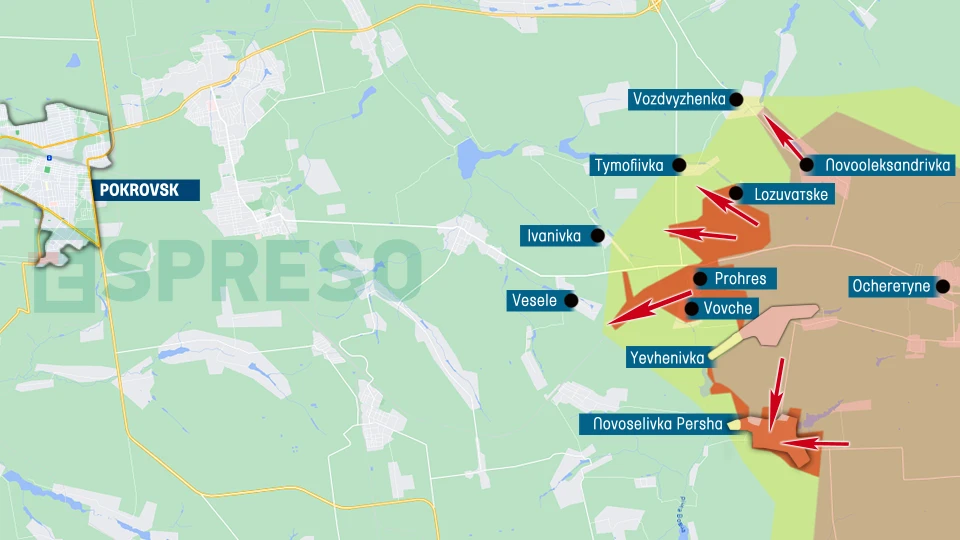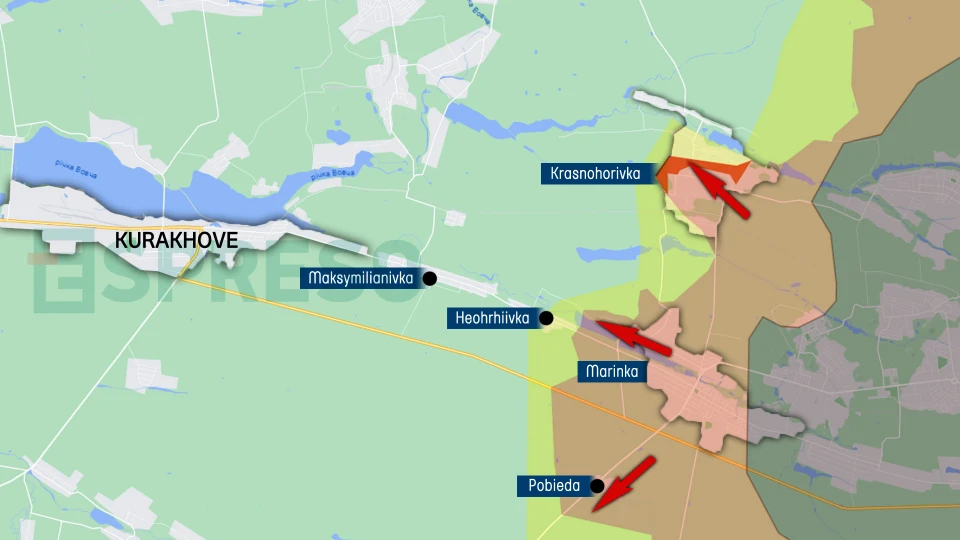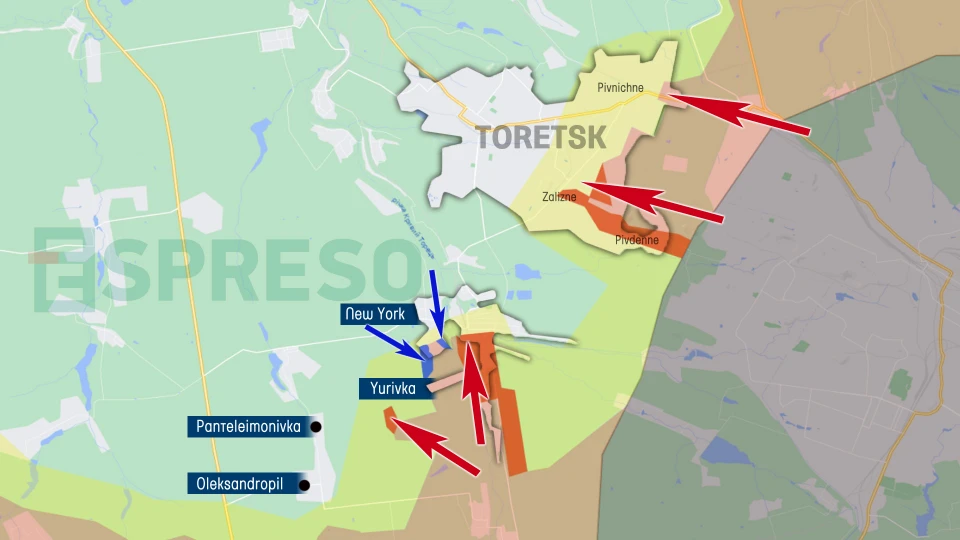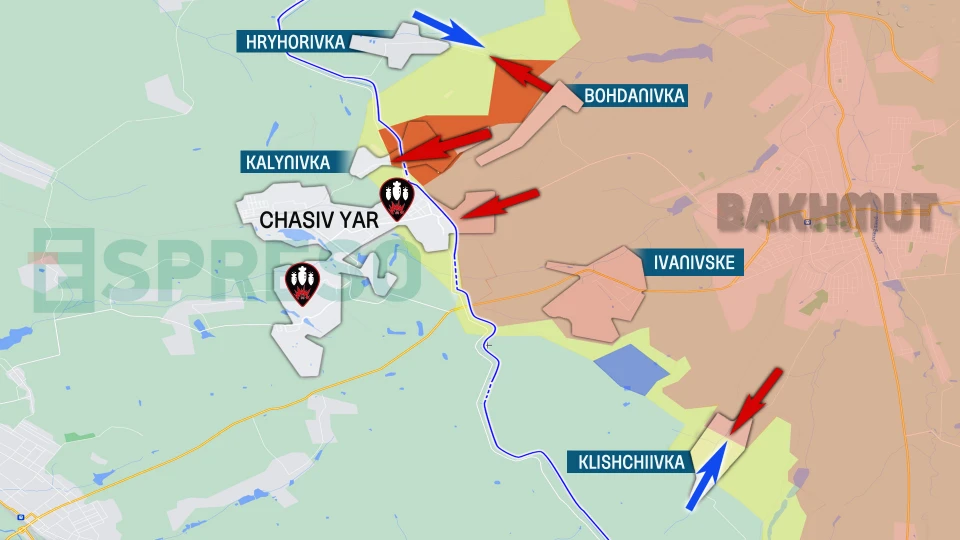
Ukrainian Zvook attracts interest from NATO countries, foreign defense companies. Serhiy Zgurets' column
The review covers key updates from the frontline, American military aid, and international perspectives on Ukrainian defense. It also explores the Zvook project and delves into why it has garnered significant interest from NATO countries
Frontline situation
If we look at the overall statistics, the number of combat engagements has increased again - 149 the day before yesterday, half of them in the Pokrovsk direction, and half of them in the same area of the frontline yesterday. The 31st, 47th, 68th, and 110th brigades are currently holding the line there, although it is extremely difficult for the military. The Russian troops are moving in the direction of Vesele, Serhiivka, and Zhelanne after capturing Progress. This is a move deeper into Ukrainian defense to the west, and we can expect the enemy to try to break through from Progress to Pokrovsk and Myrnohrad. There are about 14 kilometers there now, which is a significant challenge for the Russians and for us, because it is an important agglomeration in the central part of Donbas and an extremely important logistics hub for Ukrainian defense.

The threat comes from several directions: the Russian forces' advance to the Pokrovsk- Kostiantynivka-Chasiv Yar road; the enemy tried to advance through Vozdvyzhenka, but was stopped there, and the defense in this area is strong. Instead, the Russian units are moving westward toward Pokrovsk - this is one threatening situation. The other is that after capturing Progress and Vovche, the enemy is already a little to the west of the Ukrainian defense line, moving from north to south along the Vovcha River and Kurakhivske Reservoir. Ukrainian defenses were formed around the river and the reservoir, but now the Russians have moved west, and there is a risk that Ukrainian troops will have to retreat to the west to minimize the threat from the north. The Pokrovsk direction remains the most difficult, and we hope that the General Staff will pay special attention to it.
Another area no less difficult is Kurakhove. The density of attacks here is also significant. There is a video of the Russians trying to advance in Krasnohorivka itself, there were reports of its capture, but Krasnohorivka is partially divided by the river that crosses this settlement, and Ukrainian troops are located in the north. The 59th Separate Motorized Infantry Brigade showed how it was quite effective in destroying at least 39 pieces of armed vehicles that were advancing on Krasnohorivka. A few days ago, a video from the 79th separate airborne assault brigade showed how it repelled a Russian attack with 55 armored vehicles, tanks and armored personnel carriers. And now we have a new video showing an attack by 57 armored vehicles - 10 tanks and 47 infantry fighting vehicles - using motorcycles. The 59th Brigade managed to thwart this attack using drops, mines, ATGMs and more - 12 armored vehicles and 8 tanks were destroyed.
Notably, in the Kurakhove direction, the Russian forces are actively using armored vehicles, unlike other directions where mainly manpower, aviation, and guided bombs are used.

Another difficult area of Ukrainian defense is Toretsk. The situation has stabilized to some extent, the Russian troops are trying to get closer to New York, and there are urban battles going on there. Opposite Toretsk, the area from Zalizne to Pivnichne is a defense line, almost along the railroad, along the spoil heaps. There is no advance of the Russians, Ukrainian brigades 32nd and 53rd with new leadership have been redeployed there, and the 95th separate assault brigade is also operating there. It can be said that the situation there is generally stabilized, although the enemy will continue to try to operate in this area. This area is important to Russians, but the enemy's chances of increasing its strength in this area are minimal. The main thing now is to take measures to destroy the occupiers.

Another area is Chasiv Yar. There have been some changes there, but not critical ones. There is information that the Russian forces managed to push through in one of the sections near Kalynivka. This is where the Siverskyi Donets-Donbas Canal has a gap of 700 meters, where the pipes go underground, where the Russian army has been amassing manpower and is trying to advance to the western part. There is no confirmation that they have really penetrated deep into Ukrainian defense lines, and I hope that they are now driving the Russian units out of this area. As far as I remember, we have both the 24th separate mechanized brigade and the 5th separate assault brigade working there, and they have been effectively managing this important line for a long time.
Chasiv Yar is located on a hill. We remember that the Russians have been trying to bypass this settlement from the front for a long time with some success - this led to the enemy entering the Kanal area. Now the defense line runs along the Siverskyi Donetsk-Donbas Canal from north to south. I hope that it is the actions of Ukrainian brigades that are restraining the Russian ability to advance. The Russians are pulling up airborne units again after suffering significant losses.

We can say that the Russians are in a hurry, realizing that the window of opportunity caused by both Ukrainian delayed mobilization and the arrival of military aid is closing. The enemy is now seeking to take advantage of the opportunities associated with the increase in its manpower and aviation and to put pressure on all parts of the front. Ukrainian General Staff understands all these risks, and the issue is to build the defense logically and correctly. As Syrskyi said, we should not hold on to the ruins at any cost. I hope this statement has practical relevance to reality and is not just words.
Ukrainian technologies of interest to the US and NATO
A few days ago, The Economist published an interesting article titled: "How Ukraine’s New Technologies Are Thwarting Russian Air Attacks, and the Innovative Acoustic Detection with Remarkable Success." The piece focuses on solutions implemented by several Ukrainian companies aimed at detecting Russian drones and missiles in the air through acoustic sensors and signal processing. The article notably highlights the Ukrainian company Zvook.
Zvook CEO Maryan Sulym explained that in two and a half years, the company has made significant progress toward meeting the needs of the Ukrainian Armed Forces. The main goal of the project is acoustic detection of enemy air attack assets. Acoustic sensors were developed by the Zvook team at the start of the full-scale invasion. According to him, the technology requires minimal maintenance, operates passively, is not detectable by enemy reconnaissance, is inexpensive, and easily scalable.
"In two and a half years, we have managed to cover about 20,000 square kilometers of Ukraine. During this time, we have also worked on additional improvements for this technology and extra modules to enhance the acoustic sensors and detection of enemy air attack assets. The detection ranges we achieve, compared to radar systems in military situational awareness for air defense, are 3-5 kilometers for Shahed drones, 5-7 kilometers for gasoline engine drones, 5-7 kilometers for jet engines like cruise missiles, aircraft, and helicopters, and up to 10 kilometers for turboprop planes due to their loudness," the expert explained.
The team used an approach of training models with artificial intelligence, which collected datasets of sound signatures from Russian assets. Since April 2022, they have been training new AI models, and by the end of the year, the models effectively filtered out potential noise, even those similar to the sound of Shahed drones.
"We continue to gather and improve our AI models, and now we can see that, thanks to positive feedback on the performance of these acoustic sensors installed across Ukraine, there is growing interest from foreign journalists, including The Economist. Detection of enemy assets within 12 seconds of the onset of the sound is already being processed and integrated into air defense situational awareness systems like Delta. We implemented these integrations back in 2022, and this data contributes to enhancing Ukraine’s defense capabilities," Sulym explained.
New trials are underway, and the devices will soon be able to provide coordinates of enemy targets, offering richer and more detailed information for both mobile fire units and air defense calculations.
These technologies have attracted the interest of NATO countries, which have begun reaching out to Zvook.
"I know that over the past six months to a year, many companies from NATO countries have been working to develop similar acoustic sensors and are perhaps inspired by the air defense principles that Zvook has been promoting since 2022. Defense agencies are also making contact, seeking to organize the creation of test clusters of acoustic sensors to enhance their own air defense systems," concluded Zvook CEO Maryan Sulym.
- News











































